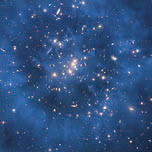
 In the November/December 2010 issue of this magazine we had a wonderful article by Graham A. Fisher about Dr. Antony Flew titled “Follow the Argument Wherever It Leads.” The title of the article was actually a quote from Socrates and Flew knew it and used it frequently. Flew was known as the world’s most notorious atheist until very late in his life when the evidence for God’s existence became so dominant in his view that he could no longer support atheism. Fisher was a student of Flew at the Keele University in England. The article gave us remarkable insight into this philosopher and his journey to belief in a designer of the cosmos — which we call God.
In the November/December 2010 issue of this magazine we had a wonderful article by Graham A. Fisher about Dr. Antony Flew titled “Follow the Argument Wherever It Leads.” The title of the article was actually a quote from Socrates and Flew knew it and used it frequently. Flew was known as the world’s most notorious atheist until very late in his life when the evidence for God’s existence became so dominant in his view that he could no longer support atheism. Fisher was a student of Flew at the Keele University in England. The article gave us remarkable insight into this philosopher and his journey to belief in a designer of the cosmos — which we call God.
As a former atheist, I believe the logical plea to go where the evidence leads has to be discarded by atheists in order not to follow in the logical footsteps of Flew. In the forty-four years that I have been carrying on discussions and studies with atheists I have seen a wide range of responses to the evidence — from personal threats against me to complete surrender in obedience to Jesus Christ. What we would like to attempt to do in this article is to give a simplified explanation of some of the evidence for God’s existence, how some atheists have responded to that evidence, and why that response is not a good answer to where the evidence leads.
Before we start this discussion, let us point out that this is an open-ended examination of the evidence. What I mean is that there is always new evidence becoming available to all of us. We cannot argue or discuss what we do not know. We do not invent a God to explain facts that mystify us, but we can take what we know to be factual and examine our beliefs on the basis of that evidence. As new facts become available, we have to look at the new data and see how it fits what we believe. This is a dynamic process — always changing, growing, and expanding. When I left atheism in 1958 there was a great deal of evidence available. Now some 54 years later there is much more evidence. While my understandings have changed because of some of this evidence, my faith in God has grown enormously. I am sure someone else will be able to write an article like this 50 years from now that will be much more factual, and much more convincing. Some religious people seem to fear science and the future knowledge of man, and that is an unfortunate thing to do.
COSMOLOGICAL EVIDENCE
THE ARGUMENT — Cosmological evidence is the true creation evidence. Really there is no evolution/creation controversy because evolution does not attempt to explain creation. Evolution assumes the creation of space/time and matter/energy has already taken place. What evolution attempts to do is to explain how once these things were created they were changed into the life-forms we observe today. There is an old joke about the atheist and God having a contest in which the winner will be the one who creates the best form of life. As the contest starts the atheist reaches down and gets a handful of dirt and says, “OK, I will go first,” whereupon God says, “Now wait a minute, that’s my dirt.”
The argument is that scientific evidence supports the fact that there was a beginning to the cosmos that we observe and the beginning had to be caused by an entity that exists outside of space and time. That entity would have set the parameters that allow space/time and matter/energy to exist in a way that sentient life could exist.
THE ATHEIST RESPONSE — Popular atheist writers like Stephen Hawking have responded that they can propose theories that allow matter/energy to come into existence out of nothing. There have also been proposals of things like 11th-dimensional superstrings that have mathematical models showing they could theoretically produce tangible matter given the proper combinations of these equations. It has also been proposed that infinite numbers of universes may exist, and ours just happens to be the one with the parameters necessary for sentient life to exist.
 WHERE DOES THE EVIDENCE LEAD? — Before we go any further, let me remind the reader that we are talking about scientific evidence. To be a valid scientific proposal one must be able to falsify the proposal and test it in some way. (This is known as “the scientific method.” See the article on page 20 about Francis Bacon, an advocate of this method.) Much of the atheist rhetoric in this area is simply not science, because it cannot be tested or falsified in any way. String theory has so many possible solutions to the equations that apply, that it is not a valid proposal. (For more information on this see Science News, 6/9/07, page 361; “Unraveling of String Theory” by Michael Lemonick, Time, 8/21/06, page 55; “Tangled Up in Strings” by Bob Berman, Astronomy, January 2006, page 16; and The Trouble With Physics: The Rise of String Theory, The Fall of a Science, and What Comes Next by Lee Smolin.)
WHERE DOES THE EVIDENCE LEAD? — Before we go any further, let me remind the reader that we are talking about scientific evidence. To be a valid scientific proposal one must be able to falsify the proposal and test it in some way. (This is known as “the scientific method.” See the article on page 20 about Francis Bacon, an advocate of this method.) Much of the atheist rhetoric in this area is simply not science, because it cannot be tested or falsified in any way. String theory has so many possible solutions to the equations that apply, that it is not a valid proposal. (For more information on this see Science News, 6/9/07, page 361; “Unraveling of String Theory” by Michael Lemonick, Time, 8/21/06, page 55; “Tangled Up in Strings” by Bob Berman, Astronomy, January 2006, page 16; and The Trouble With Physics: The Rise of String Theory, The Fall of a Science, and What Comes Next by Lee Smolin.)
 The concept of multiple universes is another untestable proposal, but the number of required universes becomes another issue. Forty years ago we knew of a few parameters that had to be satisfied for stable matter to exist in such a way that life could exist. Our work in modern science has shown us that the Drake equation predicting the number of life-supporting planets in our galaxy with its several variables, was vastly conservative in how many parameters actually exist. We have a list of 47 parameters originally compiled by Dr. Hugh Ross in a paper titled “Limits for the Universe” available at www.doesgodexist.org/Charts/EvidenceForDesignInTheUniverse.html. When the calculations are made of how many universes would be required before all of these parameters are satisfied, the number exceeds any level of statistical significance. We will continue this discussion in the next area of evidence.
The concept of multiple universes is another untestable proposal, but the number of required universes becomes another issue. Forty years ago we knew of a few parameters that had to be satisfied for stable matter to exist in such a way that life could exist. Our work in modern science has shown us that the Drake equation predicting the number of life-supporting planets in our galaxy with its several variables, was vastly conservative in how many parameters actually exist. We have a list of 47 parameters originally compiled by Dr. Hugh Ross in a paper titled “Limits for the Universe” available at www.doesgodexist.org/Charts/EvidenceForDesignInTheUniverse.html. When the calculations are made of how many universes would be required before all of these parameters are satisfied, the number exceeds any level of statistical significance. We will continue this discussion in the next area of evidence.
Even if one is to accept any of these proposals and theories, the fundamental question remains. Quantum mechanics has shown us that there is a level where Newtonian physics no longer applies. Principles of simultaneity and “Shroedinger’s Cat” that is theoretically alive and dead at the same time are fascinating and may lie at the base of how the creation of the cosmos took place, but the origin of these new concepts and the dimensions that govern them is still not answered. The old analogy of an explosion in a junk yard producing a car is not far off here. I may know how the car works and what it takes to make one, but suggesting that the car came into existence without an intelligence to direct its formation and functioning at a higher level than the car just does not work logically. If a robot assembles the car, the design of that robot becomes the issue and that is our next argument.
DESIGN EVIDENCE
THE ARGUMENT — The question of design has been mishandled so badly by atheists and religionists alike that the most basic question has largely been lost. In simple terms the design argument simply asks, “Is it reasonable to believe that the cosmos we observe could have come into existence by blind mechanistic chance?” The question of evolution has been thrown into this discussion in such a way that the argument has gotten lost. Many evolutionists like Francis Collins, the former director of the “Human Genome Project”, are fundamental believers in God and in Christianity. What this degenerates into is a theological debate about how we interpret the Bible. While that is an important topic it is not related to the evidence for the existence of God.
The design argument for God’s existence functions at different levels. On an intuitive level the question is an emotional one. For example, can you watch the birth of a baby and believe that what you have just witnessed is a product of mindless processes in the natural world? On a philosophical level questions arise about the role of the observer on the outcome of a process and whether without an observer the final event would have been completed. The “Intelligent Design” movement has taken the question to a mathematical level asking if statistically it is possible to believe that chance and time alone can produce the complexity we see in all areas of observation. Calculations have been made on the chance happening of any number of events that are seen as unlikely by believers in God such as the production of a stable atom, the origin of life, the evolutionary processes going from an amino acid to DNA, or the complexity of the human brain. In all cases authors have been able to show that the probabilities are vastly beyond the Dirac probability limit for acceptable production by mindless chance. Antony Flew was especially impressed with the complexity of life occurring by chance following the chemical sequence proposed by the Miller-Urey experiment. The winner of the Nobel Prize for the discovery of the helix structure of DNA, Francis Crick, even proposed “directed panspermia” — the theory that aliens seeded life on the earth. Of course, this leaves the question of where the aliens came from. The design argument is that all calculations done show that the probabilities are beyond what can rationally be accepted as mathematically possible by mere chance.
THE ATHEIST RESPONSE — Most atheist responses to the design argument have been that the calculations are contrived. One suggestion has been that these are ad hoc arguments — that we are here, so any calculation begs the question of how we got here. Another charge is that not all of the variables in these calculations are independent. If every star in the creation has planets by virtue of the method by which the star was formed, then the number of possible planets is virtually infinite, greatly improving the odds. Another suggestion is that as our knowledge gets better, naturalistic methods of producing the desired final product become more feasible. We now know for example that amino acids, the building blocks of life, are produced and exist in interstellar space. The Miller-Urey hypothesis dealt with the production of amino acids, so all of the arguments about the formation of life by chance get better if the building blocks exist before we start any formation of life.
The final argument by most atheists would be that if the universe is infinite and if there is infinite time available, then anything can happen. No matter what the odds are, such as the odds of drawing an ace of spades out of a cold deck of cards, if you draw 52 times out of a deck of 52 cards the odds are high that at least one of those times you will draw the ace of spades. The argument would be that in an infinite universe anything can happen no matter what the odds are.
WHERE DOES THE EVIDENCE LEAD? — We have already pointed out that we cannot discuss what we do not know. It is true that in the past some design arguments have started with what we see in the world around us and try to work back to how it got to be the way it is. That is not the case in most modern design arguments in apologetics. If we start with the “big bang” and ask what the odds are of any kind of life coming into existence by chance alone then we are not demanding that the life be like us. We are also mandating that we do not have infinite time or infinite space! If the big bang happened 13.7 billion years ago then the time and the volume of space available for life to be formed in is limited. If space is isotropic then the volume would be the volume of a sphere with a radius of 13.7 billion light years.
While it is true that some parameters in any design argument might be related to other parameters, in the major design examples that are given it does not seem possible for probability functions to be linked. No one has suggested that the Planck constant, the velocity of light, the gravitational coupling constant, the electromagnetic coupling constant, and the strong and weak nuclear-force constants are directly related to each other in the production of a single atom from the big-bang conditions. Research on the proposed “God particle” uses these constants but does not explain their origin. (See the News and Notes article “The God Particle” on page 31.)
The calculations that have been done on various probability functions, especially in the areas of space and nuclear physics, no matter who did the calculations, have always been in the range of one chance in ten to the 600th power or more. All calculations of the number of baryons (nuclear building particles) in the universe have been in the range of ten to the 60th power. There is such a vast difference between these two numbers that the magnitude of size and mass in the cosmos seem to be a moot point.
ONTOLOGICAL EVIDENCE
 THE ARGUMENT — Webster’s Dictionary defines ontology as “the branch of metaphysics dealing with the nature of being or reality.” Ontology investigates what exists or what can be said to exist based on certain feelings or human principles and faculties. The question in simple terms is, “Why do humans worship God?” Why do we even conceptualize the idea of a supreme being? What makes us aware of self? Why do we propose and value morality of any kind? What gives us the capacity to express ourselves in art, music, poetry, literature, politics, and all the other ways that distinguish us from the animal world around us? If chimpanzees and gorillas have a genetic makeup that is over 90% the same as ours, why do these primates not do 90% of the things that humans do? Man’s unique creation “in the image of God” is claimed to be a testimony to the fact that God does exist and we are uniquely made in God’s image.
THE ARGUMENT — Webster’s Dictionary defines ontology as “the branch of metaphysics dealing with the nature of being or reality.” Ontology investigates what exists or what can be said to exist based on certain feelings or human principles and faculties. The question in simple terms is, “Why do humans worship God?” Why do we even conceptualize the idea of a supreme being? What makes us aware of self? Why do we propose and value morality of any kind? What gives us the capacity to express ourselves in art, music, poetry, literature, politics, and all the other ways that distinguish us from the animal world around us? If chimpanzees and gorillas have a genetic makeup that is over 90% the same as ours, why do these primates not do 90% of the things that humans do? Man’s unique creation “in the image of God” is claimed to be a testimony to the fact that God does exist and we are uniquely made in God’s image.
THE ATHEIST RESPONSE — In recent years there have been extensive studies designed to show that all of the processes described above are just functions of the human brain. There has even been a suggestion that there is a “god lobe” in the brain which gives us this capacity. It has also been suggested that animals may do these things, but just do not do them as we do them. It is claimed that whales and birds do sing to each other and that there are moral codes in animal behavior, but we just do not understand these codes and thus assume they do not exist.
WHERE DOES THE EVIDENCE LEAD? — The difficulty in this area is that everyone tends to be guilty of anthropomorphizing the animals in the world around us. We interpret what animals do as human expressions when in fact the animal is not doing anything that remotely approaches what humans do. Birds singing, for example, is not an exercise in artistic creation of expression as it is with humans. The beautiful cardinal singing away outside your window in the spring is sending out a warning to all other male cardinals to stay out of his territory and away from his mate, or else. We attach human emotions to things like bird songs, whale chirps, and wolf howls, and that tends to cloud the picture no matter what side of the debate we may be on.
Animals can be trained to do almost anything if the training is done in such a way that it is congruent with the animal’s survival patterns. Animals raised in human homes with human artifacts do not become humans even when their intelligence is very high. Tragic attacks have occurred numerous times when these animals had a stimulus that triggered a survival instinct behavior. Those of us with children who are mentally challenged know personally that intelligence is not related to spiritual, artistic, or musical expression. Studies of brain patterns in animals and humans under varied social circumstances do not show a “god lobe” or a “god response section” to the brain.
The evidence does not support the claim that ontological evidence indicates an animal cause to all human behavior including worship, artistic creativity, and conceptualization of self. This is a field of intense scientific research, so the picture will undoubtedly clarify in the years ahead.
PAIN AND SUFFERING
THE ATHEIST ARGUMENT — Our final point is the reverse of what we have done previously. This is a negative claim made by atheists to “prove” God does not exist. The claim here is that the reality of our existence demonstrates that in the words of Richard Dawkins, “The universe we observe has precisely the properties we should expect if there is at the bottom, no design, no purpose, no evil and no good. Nothing but blind pitiless indifference” (River Out of Eden [New York: BasicBooks, 1995] page 133). This argument against the existence of God maintains that if God exists, he would not allow the tragedies of life to happen — the natural disasters, the disease, the violence, the inhumanity of humans to fellow humans, and the pain that all of this brings.
THE CHRISTIAN RESPONSE — Christians have maintained that there are beneficial products to pain and suffering. The claim is that pain and suffering allow growth and discipline to be developed. The fact that this life is not all there is and that something better lies in the future when this life is over, makes the atheist challenge of little significance.
WHERE DOES THE EVIDENCE LEAD? — First of all, those things that humans have done in opposition to what God has told us to do cannot be a part of this discussion. God cannot be held accountable for our stupidity and selfishness. The fact is that atheists offer no solution to the question of pain and suffering at all. Suggesting indifference is not a solution to anything. The fact that God allows us to have freedom of choice, choosing whether or not to live as God commands, is what allows real love to exist. Love can only exist if there is choice. Sexual “love” without choice, for example, is called rape and has nothing to do with love. The support and service of people of like mind when we face pain and suffering offers practical help in dealing with problems in life. The fact that having experienced a tragedy allows us to use that experience as a ministry to bring fulfilling work and purpose to life makes Christianity uniquely practical in addressing problems and suffering. Above all, pain and suffering from a Christian perspective means we have a purpose in existing — something that the atheist cannot entertain. God’s purpose in creating us makes everything in life an opportunity to serve — even the unpleasant things that happen.
 From an evidence standpoint, the Christian response to all problems of pain and suffering has supported their position. Major relief of all kinds is dominated by Christian groups whatever the tragedy or problem is. Homeless shelters, treatment centers for diseases, disaster relief programs, food programs, hospitals, care facilities, care programs for mentally and physically handicapped, substance abuse programs, women’s shelters, orphanages, elderly care facilities, and educational institutions have been dominated by Christian organizations and churches.
From an evidence standpoint, the Christian response to all problems of pain and suffering has supported their position. Major relief of all kinds is dominated by Christian groups whatever the tragedy or problem is. Homeless shelters, treatment centers for diseases, disaster relief programs, food programs, hospitals, care facilities, care programs for mentally and physically handicapped, substance abuse programs, women’s shelters, orphanages, elderly care facilities, and educational institutions have been dominated by Christian organizations and churches.
In this oversimplified and generalized treatment we have simply tried to make some general comparisons. Previous issues of this journal and our web sites go into each of these areas in more detail. The evidence is massive, and we have just tried to hint at a small part of it. For more information we encourage you to go to one of our websites.
Picture credits:
© iStockPhoto.com/dra_schwartz
NASA, ESA, M.J. Jee and H. Ford (Johns Hopkins University)
© iStockPhoto.com/ftwitty
© Marmion. Image from BigStockPhoto.com
